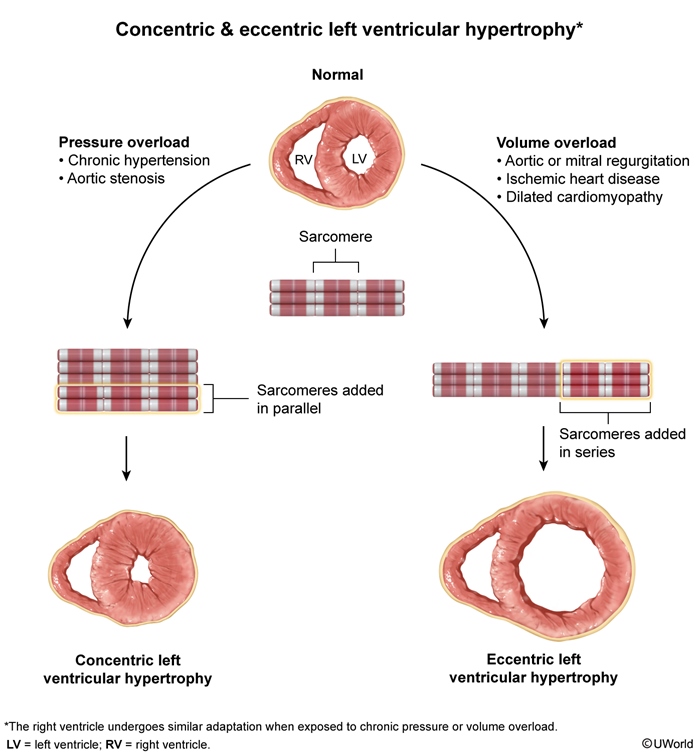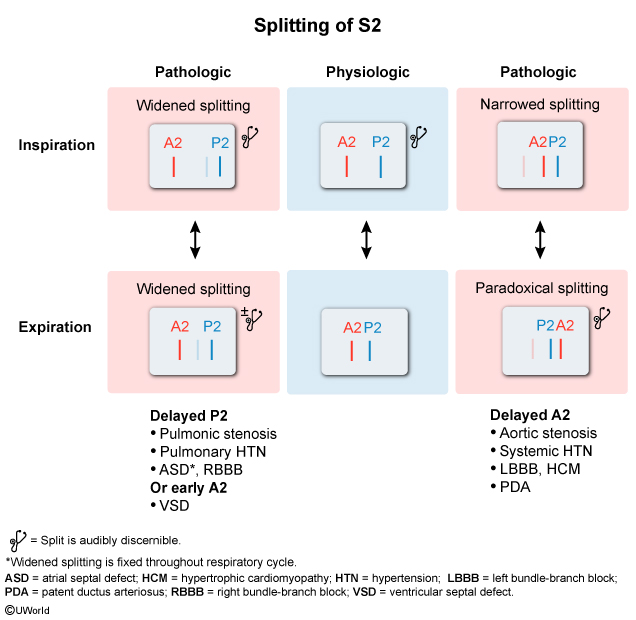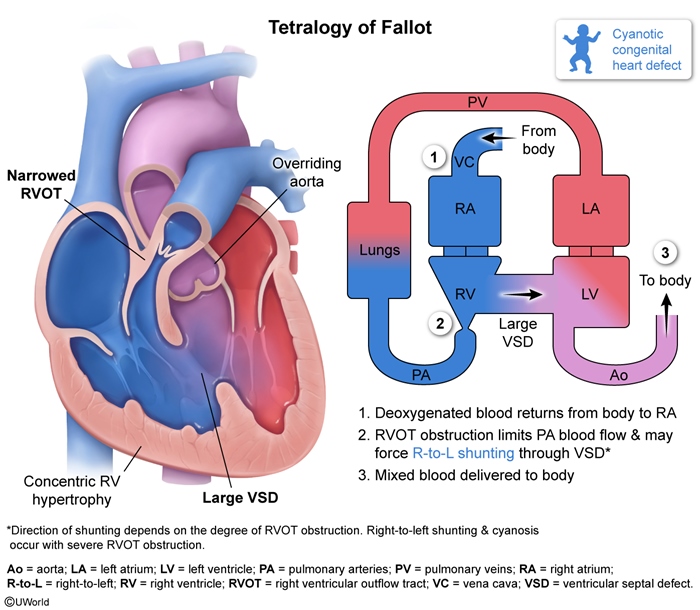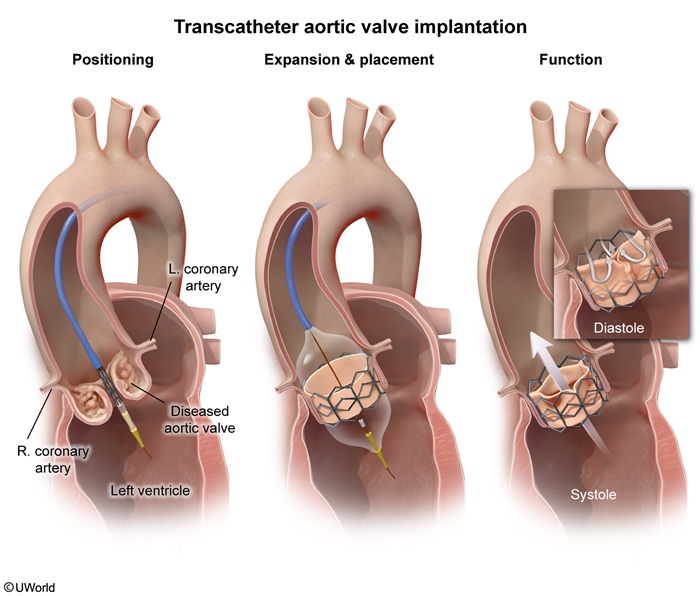Valve Disorders: Pulmonic Stenosis
Article Sections
Introduction
Pulmonic stenosis involves a narrowing of the pulmonic valve orifice that restricts right ventricular outflow. In contrast with aortic stenosis, which usually develops progressively with aging, pulmonic stenosis is usually congenitally present. Severe pulmonic stenosis causes substantial hemodynamic disruption and leads to right-sided heart failure.
Pathophysiology
The effect of pulmonic stenosis on the right ventricle is similar to that of aortic stenosis on the left ventricle. Ejection of blood from the right ventricle into the pulmonary artery is restricted, resulting in right ventricular pressure overload. Compensatory concentric (Figure 1) right ventricular hypertrophy develops, allowing for temporary maintenance of adequate right ventricular stroke volume through the stenotic valve; however, this is achieved at the expense of increased wall stress, myocardial work, and oxygen demand. Eventually, adequate right ventricular stroke volume cannot be maintained and patients begin to experience symptoms.
Continue Learning with UWorld
Get the full Valve Disorders: Pulmonic Stenosis article plus rich visuals, real-world cases, and in-depth insights from medical experts, all available through the UWorld Medical Library.
Figures



